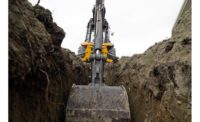OSHA gives its SVEP a passing grade
Construction companies, small companies overrepresented in program

 Despite some problems, OSHA says its Severe Violator Enforcement Program (SVEP) is “off to a strong start.”
Despite some problems, OSHA says its Severe Violator Enforcement Program (SVEP) is “off to a strong start.”
That assessment came in a Severe Violator Enforcement Program White Paper issued this week by the agency that cover the SVEP's first 18 months in operation – from June 2010 through February 2012. There were a total of 191 SVEP inspections during that time.
The SVEP allows OSHA to concentrate its resources on inspecting employers who have “demonstrated indifference to their OSH Act obligations by willful, repeated, or failure-to-abate violations,” according to the agency. In addition to the usual fines and correction of violations, companies who find themselves with SVEP status can face enforcement actions that include mandatory follow-up inspections, increased company/corporate awareness of OSHA enforcement, corporate-wide agreements, where appropriate, enhanced settlement provisions, and federal court enforcement under Section 11(b) of the OSH Act.
High gravity and high-emphasis hazards
Companies are placed in the SVEP after an inspection uncovers at least two willful, repeat, or failure-to-abate violations that are considered “high-gravity” and related to “high-emphasis hazards.” High-emphasis hazards include falls, amputations, grain entrapment, trenching, process safety management, and exposure to lead, silica, and combustible dust.
Additionally, a fatality or catastrophic incident can result in SVEP if an inspection finds at least one willful, repeat, or failure-to-abate violation.
The white paper provided a breakdown of cases and causes:
- Non-fatality/catastrophe inspection with two or more willful or repeated violations or failure-to-abate notices that are high gravity violations related to High-Emphasis Hazards (126 cases)
- Fatality or catastrophe inspection with one or more willful or repeat violations or failure-to-abate notices (36 cases)
- Egregious cases involving per-instance citations (25 cases)
- Egregious cases with fatalities (3 cases)
- Non-fatality/catastrophe inspection with three or more willful or repeat violations or failure-to-abate notices that are high gravity violations related to the potential release of a highly hazardous chemical (1 case)
Construction companies and follow-up problems
Construction companies comprise 60 percent of SVEP cases. A majority of SVEP-designated companies are small, with 50 percent having up to 25 employees, and 24 percent having between 26 and 100 employees. Another 17 percent have more than 250 employees.
The preponderance of construction firms lead to agency failures in doing follow-up inspections once cases were settled with a final order. Because many small construction companies have mobile work sites, compliance officers attempting to conduct follow-up inspections were unable to locate 52 of the construction companies they were seeking. OSHA said it has made changes in the way it tracks employers in order to counter this.
OSHA’s goal of inspecting multiple sites of the same company frequently ran up against the goals of government attorneys, who decided that related inspections would harm litigation and settlement strategies in 38 of the cases.
The report notes that the contest rate for SVEP violations is four times the agency average, with almost half the employers challenging the OSHA decision. The white paper called that predictable, because “every employer in every SVEP case is facing significant sanctions for willful and repeat violations.”
As of the beginning of 2013 about 390 establishments were designated as severe violators.
Looking for a reprint of this article?
From high-res PDFs to custom plaques, order your copy today!




